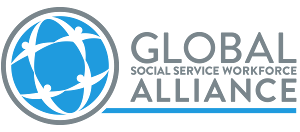
Day 4, September 27, Social Service Workforce Week
As many Alliance members know, there have been multiple recent efforts to address violence against children across the globe. Sustainable Development Goal 16.2 calls for ending all forms of violence against children. The distressing findings of many national surveys of violence against children have catalyzed stakeholders to take action and work together to end violence. To date, 23 countries have signed up as Pathfinder Countries through the Global Partnership to End Violence, demonstrating their commitment to lead comprehensive initiatives to end violence against children as outlined in National Plans of Action. These plans are meant to incorporate the seven strategies to end violence as outlined in the INSPIRE package and the accompanying actions laid out in the recently released INSPIRE Implementation Handbook.
Studies show that approximately 1 billion children worldwide have experienced physical, sexual or psychological violence in the last year alone. While the magnitude of violence against children can be discouraging, one of the solutions and reasons for great hope lies in strengthening the social service workforce.
The social service workforce is on the front lines every day to prevent and respond to violence against children in its multiple forms, by:
- Playing a key role as central actors facilitating collaboration amongst service providers
- Carrying out strengths-based assessments
- Providing or referring children and their families to support services
- Monitoring children separated from their families who are living in institutions and home placements and supporting their reintegration
- Providing direct counseling and psychosocial support
- Mobilizing communities and facilitating community discussions about cultural beliefs and social norms related to violence
- Supporting the development of policies and legislation
- Carrying out policy and programmatic advocacy
Social service workers have noted the many positive changes over time that children and families have experienced as a result of their work together, as reported in the State of the Social Service Workforce Report 2017. Outcomes include an increase in children and families’ self-worth, self-confidence and morale. They have seen increased trust, communication of feelings, attachment and emotional bonds among family members. They have noted that caretakers better understand how to engage with and care for the children in their care. And they have seen families benefit from various services, such as health and nutrition, shelter and birth certificates and have become empowered to earn income to support themselves and their families.
These positive outcomes are only possible when the right number of workers are in the right places with the right training. This requires careful strategic planning with a diverse range of people at the table.
Many countries recognize the importance of collaborative workforce strengthening strategies and are incorporating them into their National Plans of Action to Address Violence against Children. Read some best practices in integrating the social service workforce within National Plans of Action.
Today as part of Social Service Workforce Week, we are offering a webinar that will provide examples of ways that coalitions of organizations coming together at the national level are developing and implementing comprehensive plans to strengthen the workforce as part of their overall plan to end violence.
For example, in Tanzania, a coalition has come together to identify concrete actions to improve workforce distribution, including ensuring that one Social Welfare Officer per district be assigned to schools to help identify children who need to be referred to services.
In Montenegro, one of their workforce strategies includes improving the design of both pre-service and professional development curricula for relevant professionals working with children victims of violence.
Fortunately, for others looking for effective ways to improve the workforce and the provision of social services and support to children and families affected by violence, several documents, tools and approaches exist. The diagram to the right outlines strategies to plan, develop and support the workforce that have been included in national strategies. The Alliance will be working with UNICEF to develop a toolkit of resources linked to specific workforce strengthening strategies.
We hope you’ll continue to work with the many members in this network to improve workforce strengthening efforts, and if you’re not yet a member, we invite you to join us in these efforts. As we all know, strengthening and supporting the social service workforce is an important pillar of any plan to address violence against children, and success requires working together.
__________________________________________________________________________________________________________________
Get Involved
- In case you missed today's webinar, the recording and presentations are now available.
- Has your country included workforce strengthening into its National Plan of Action to Address Violence? Send us details so that we can share with others so they can learn from your efforts.
- Learn more about strategies to plan, develop and support the workforce.
- Take a look at the steps laid out in the Call to Action and contact us if you would like to add your logo to show your support. To date 34 organizations have signed on in support. Read about actions underway by these organizations.
- Read more about the important role of the social service workforce in addressing violence against children in The State of the Social Service Workforce 2017 Report
__________________________________________________________________________________________________________________
|
Read how organizations that have signed on to the Call to Action are supporting social service workforce strengthening efforts:
|
